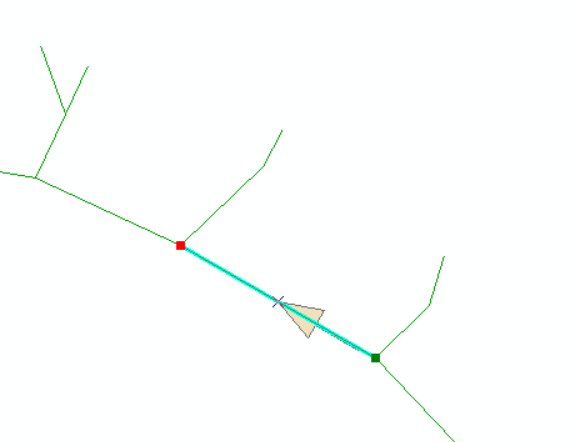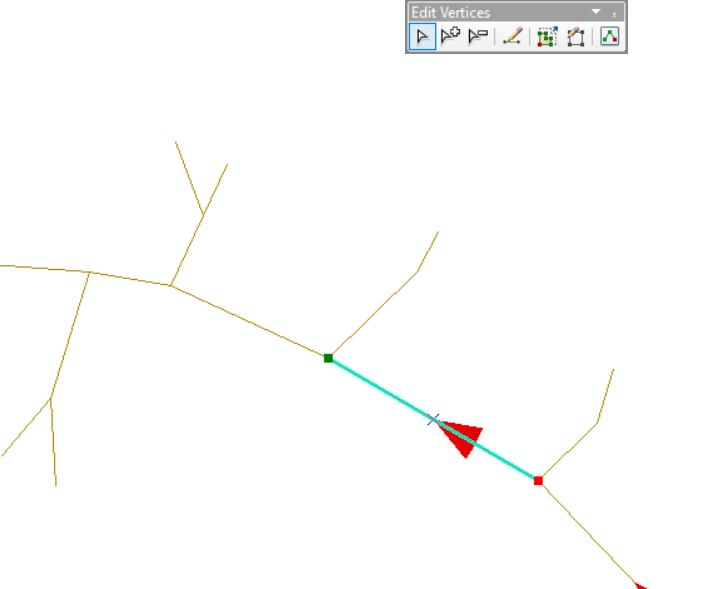Hello everyone.
I work with sewer programs, and found that working with NetworkFlowOrientor can be very helpful in ongoing work.
The purpose for which I use NetworkFlowOrientor is to find mistakes made during autocad typing.
As we know, sewage flows gravitationally so it is important that the beginning of the line be in the high sewer pit and the end point will be in the low sewer pit.
When I work with NetworkFlowOrientor I put the sewer line in line port, And in destination the layer of sewer pits.
When I check the result coming out in GIS, most of the lines that needed to be flipped were flipped.
But about 20% reversed incorrectly.
I guess the problem is in my file, I guess in the sewer pits layer.
So I would like to understand the nature of the NetworkFlowOrientor well.
And here's a small example of him turning the line the wrong way.
The arrow indicates the flow direction, here in the original file. (Red is the end of the line)
 And in the picture here the line flipped over to me, even though it's a mistake.
And in the picture here the line flipped over to me, even though it's a mistake. Thanks!
Thanks!






